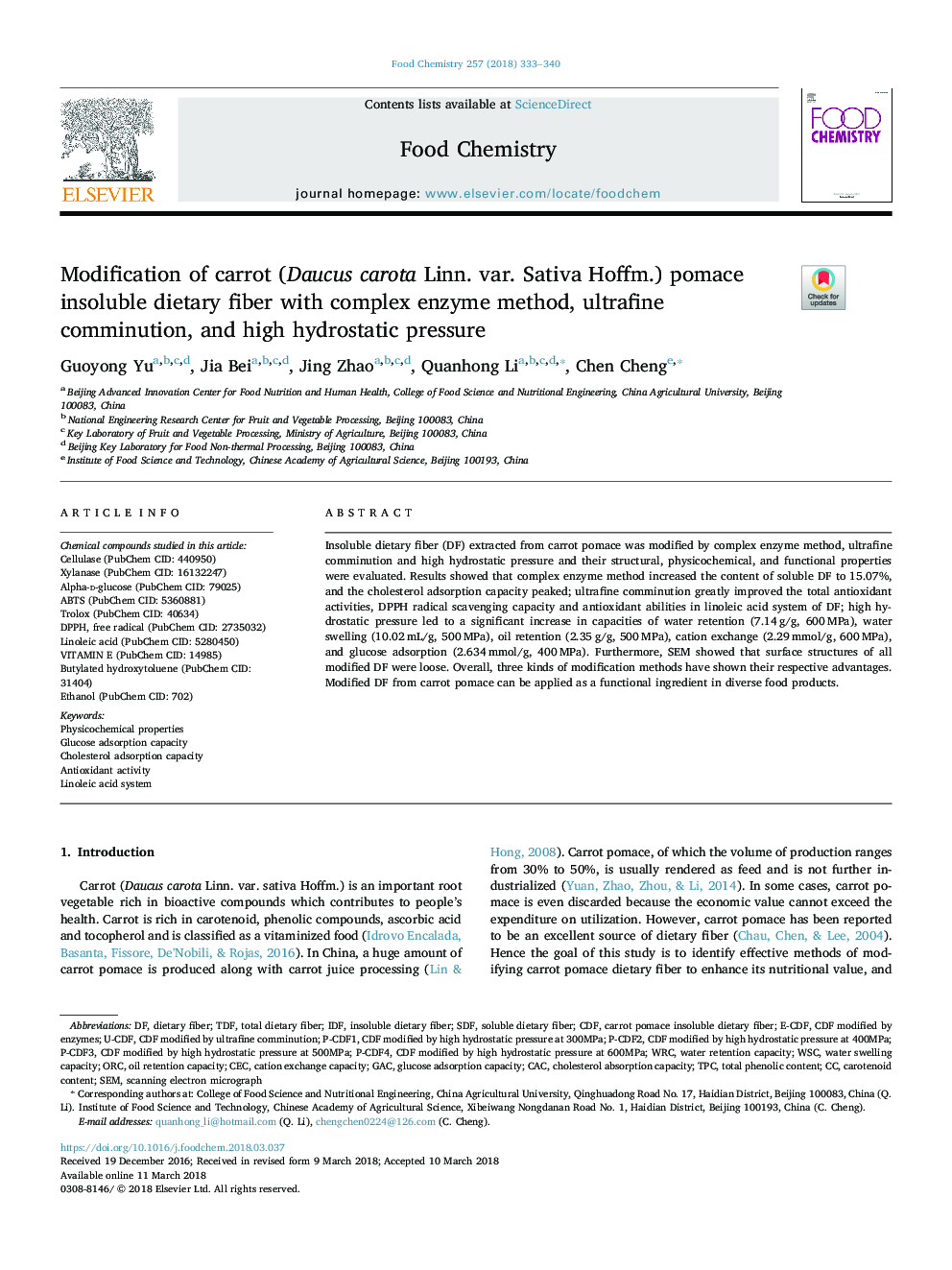| Article ID | Journal | Published Year | Pages | File Type |
|---|---|---|---|---|
| 7585288 | Food Chemistry | 2018 | 8 Pages |
Abstract
Insoluble dietary fiber (DF) extracted from carrot pomace was modified by complex enzyme method, ultrafine comminution and high hydrostatic pressure and their structural, physicochemical, and functional properties were evaluated. Results showed that complex enzyme method increased the content of soluble DF to 15.07%, and the cholesterol adsorption capacity peaked; ultrafine comminution greatly improved the total antioxidant activities, DPPH radical scavenging capacity and antioxidant abilities in linoleic acid system of DF; high hydrostatic pressure led to a significant increase in capacities of water retention (7.14â¯g/g, 600â¯MPa), water swelling (10.02â¯mL/g, 500â¯MPa), oil retention (2.35â¯g/g, 500â¯MPa), cation exchange (2.29â¯mmol/g, 600â¯MPa), and glucose adsorption (2.634â¯mmol/g, 400â¯MPa). Furthermore, SEM showed that surface structures of all modified DF were loose. Overall, three kinds of modification methods have shown their respective advantages. Modified DF from carrot pomace can be applied as a functional ingredient in diverse food products.
Keywords
DPPH, Free radical (PubChem CID: 2735032)WRCWSCCECSDFTDFVitamin E (PubChem CID: 14985)TPCGACCACORCCDFButylated hydroxytoluene (PubChem CID: 31404)IDFEthanol (PubChem CID: 702)Linoleic acid (PubChem CID: 5280450)Insoluble dietary fiberTrolox (PubChem CID: 40634)Physicochemical propertiescation exchange capacityWater retention capacityAntioxidant activitySoluble dietary fiberDietary fiberTotal phenolic contentCarotenoid contentSEMScanning electron micrographTotal dietary fiber
Related Topics
Physical Sciences and Engineering
Chemistry
Analytical Chemistry
Authors
Guoyong Yu, Jia Bei, Jing Zhao, Quanhong Li, Chen Cheng,
